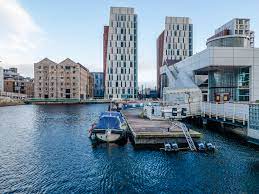The annual nationwide survey by business group Irish Business Against Litter (IBAL) of beaches and harbours has shown litter levels on the rise, with only 8 of 33 areas surveyed deemed ‘Clean’.
Among the areas branded ‘heavily littered’ were Dublin’s Grand Canal Dock and Tolka River at Annesley Bridge.
Alongside its impact on tourism and recreation, IBAL is warning that coastal litter has grave implications for the future of our planet.
Beaches, harbours, rivers and their immediate environs were monitored by An Taisce in June and July.
Many popular beaches slipped to ‘moderately littered’ status, among them Portmarnock. Skerries was also moderately littered, but Dun Laoghaire was again ‘clean’.
“Unfortunately the improvement observed at our beaches last year seems to have reversed this time round,” commented IBAL’s Conor Horgan.
“We had hoped that the decline in Covid-related litter might bring an improvement in overall cleanliness, added to the fact that many who staycationed last year would have travelled abroad this summer. Our most popular beaches are not heavily littered, but they’re not as clean as they should be.”
At the bottom end of the table, there was dramatic fall in cleanliness at Grand Canal Dock in Dublin, which was ‘heavily littered’.
An Taisce reported “heavy levels of a wide variety of litter, both alcohol and food related … litter was both land-based and water-based and long-lie and short-lie”.
“It jars to see the neglected state of an area which has been the subject of millions of euros of investment and attracts so many business visitors. I don’t believe this would be allowed persist in other European capitals,” commented Mr Horgan.
Annesley Bridge in Dublin was deemed heavily littered and suffered ‘very high levels of casually discarded food and alcohol items’, while ‘the river bed continues to harbour larger, long-lie items like shopping carts, scooters, clothing and traffic cones’.
Covid-related litter on the decline … but not coffee cups
Unsurprisingly there was a fall-off in Covid masks and gloves found, but also in alcohol-related litter which was linked to lockdown.
Coffee cups remained a significant litter item, however, present in half of the areas surveyed.
The most common forms of litter found by the assessors were cigarette butts, sweet wrappers and plastic bottles.
“Every day it seems we hear more of the dire consequences which marine litter, much of it plastic, holds for our planet,“ adds Mr Horgan.
“We need to impress on people that simple individual actions such as discarding a coffee cup – or even a cigarette butt – have implications which stretch beyond the local environment.”
With 10 million tonnes of plastic ending up in our oceans each year, it is estimated that there will be more plastic than fish in our oceans within 30 years.
“Research shows a single cigarette butt can contaminate up to 200 litres of water.
IBAL coastal litter survey 2022*
| Clean To European Norms | |
| Bray seafront | Wicklow |
| Dun Laoghaire harbour | Dublin |
| Keem beach | Mayo |
| Killiney beach | Dublin |
| Mountshannon (River Shannon) | Clare |
| Old Head beach | Mayo |
| Salthill beach | Galway |
| Tramore beach | Waterford |
| Moderately Littered | |
| Ballybunion beach | Kerry |
| Brittas Bay | Wicklow |
| Castletownbere harbour | Cork |
| Curracloe beach | Wexford |
| Clogherhead beach | Louth |
| Dog’s Bay beach | Galway |
| Doolin pier and harbour | Clare |
| Dungarvan harbour | Waterford |
| Killybegs harbour | Donegal |
| Kilmore Quay harbour | Wexford |
| Lahinch beach | Clare |
| Portmagee harbour | Kerry |
| Portmarnock beach | Dublin |
| Skerries beach | Dublin |
| Strandhill beach | Sligo |
| Littered | |
| Ballinacurra | Cork |
| Bantry harbour | Cork |
| Bundoran beach | Donegal |
| Dingle harbour | Kerry |
| Kinsale harbour | Cork |
| Lough Rea (Loughrea) | Galway |
| Heavily Littered | |
| Annesley Bridge (River Tolka) | Dublin |
| Cork Harbour (Blackrock Castle) | Cork |
| Grand Canal Dock | Dublin |
| White Bay beach | Cork |
*Areas surveyed comprise waterfront and immediate environs. Within each category, order is alphabetical.
